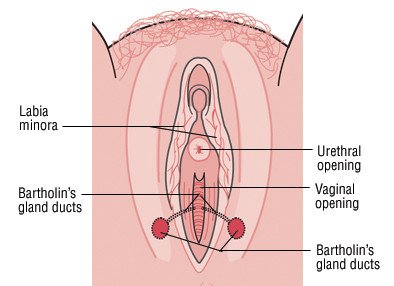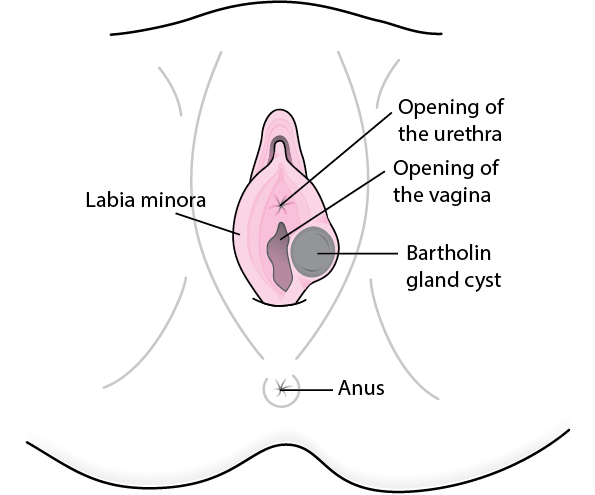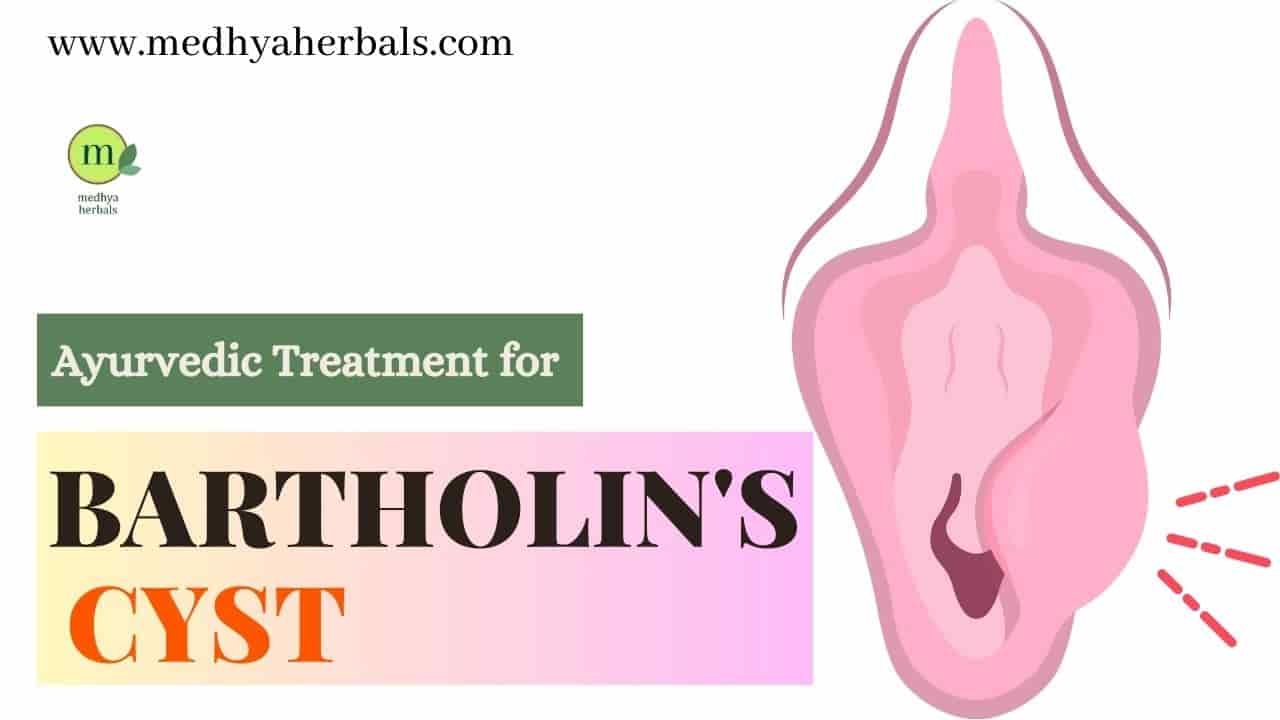The Bartholin’s glands, tiny yet crucial, sit quietly on either side of the vaginal opening, playing an essential role in female reproductive health. Yet, when one of these glands experiences a blockage, it can lead to the formation of a Bartholin’s cyst, a condition familiar to many women of reproductive age. These cysts can range from being completely painless to causing significant discomfort, especially when they become infected and evolve into a Bartholin’s abscess. If you’ve ever noticed a soft lump near your vaginal opening or experienced pain in that area, especially during activities like walking or sitting, you might be dealing with a Bartholin’s cyst.
But what causes these cysts? Can everyday activities like shaving increase their occurrence? And more importantly, how can they be treated, preferably without surgery? As someone deeply invested in women’s health and with extensive research into the nuances of the female reproductive system, I promise to shed light on these questions and more.
Dive into this comprehensive guide to understand Bartholin’s cysts better, discover natural treatment methods, and learn how to distinguish between a cyst and other similar conditions. Together, we’ll demystify this common condition and equip you with the knowledge to handle it confidently.
Understanding Bartholin’s Cyst: Causes and Symptoms
Bartholin cysts are a common condition experienced by many women, especially those of reproductive age. However, while their occurrence is common, they aren’t a “normal” part of female anatomy. Instead, they are a result of the blockage of the Bartholin’s gland duct.

The Bartholin’s Glands
The Bartholin’s glands, named after the Danish anatomist Caspar Bartholin who described them, are a pair of pea-sized glands located on either side of the vaginal opening. Their primary function is to produce and secrete a mucus-based fluid that aids in lubricating the vagina. This lubrication plays a crucial role during sexual activity, ensuring comfort and reducing friction.
The secretions from these glands are expelled through tiny ducts, which open near the vaginal orifice. It’s the blockage of these ducts that leads to the formation of a Bartholin’s cyst.
Causes leading to cyst formation
Several factors can cause the blockage of the Bartholin’s gland duct, leading to cyst formation:
- Infections: Both bacterial and viral infections can cause swelling or inflammation of the duct, leading to its blockage.
- Trauma: Physical trauma or injuries to the vaginal area can cause scar tissue formation or direct blockage of the duct.
- Thick mucus: On occasions, the mucus secreted by the Bartholin’s gland becomes too thick or viscous, preventing it from flowing freely through the duct. This accumulation can lead to blockage and subsequent cyst formation.
- Tight clothing: Tight pants or underwear can cause friction and put pressure on the Bartholin’s glands, leading to blockage. Additionally, tight clothing can trap moisture, creating an environment conducive to bacterial growth, which can increase the risk of infections.
What does a Bartholin cyst look like?
Visual identification of a Bartholin’s cyst can be the first step towards diagnosis. It typically manifests as a painless lump or swelling on one side of the vaginal opening. Its size can range from that of a pea to that of a golf ball. Due to its location, the cyst might cause discomfort during activities like walking, sitting, or sexual intercourse.
If the cyst becomes infected, noticeable changes can occur. The area might become red, swollen, and painful. Warmth can also be felt around the infected site, and in some cases, the skin over the cyst can appear shiny due to the stretching from the swelling.
Common symptoms associated with a Bartholin’s cyst
While some Bartholin’s cysts might not exhibit any noticeable symptoms, especially if they’re small, others can present a range of symptoms:
- Painless lump: One of the primary symptoms of a Bartholin’s cyst is the presence of a soft, painless lump on one side of the vaginal opening.
- Discomfort: Depending on its size and location, a Bartholin’s cyst can cause discomfort during walking, sitting, or sexual activity.
- Pain: If the cyst becomes infected, turning into an abscess, it can become significantly painful.
- Redness and warmth: An infected Bartholin’s cyst might make the skin overlying it appear red and feel warm to the touch.
- Fever and malaise: In cases of severe infection, systemic symptoms like fever and a general feeling of being unwell might be present.

Understanding the causes and symptoms of a Bartholin’s cyst can help in its early detection and management, ensuring that it doesn’t lead to further complications.
Is it normal to get cysts down there?
The vaginal area is home to various glands and tissues, and like any other part of the body, it’s susceptible to cyst formation. While it’s common for women to experience cysts in this region at some point in their lives, it’s crucial to differentiate between “common” and “normal.”
While these cysts are frequently benign and often resolve on their own, any new or persistent cyst should be evaluated by a healthcare professional to rule out more severe conditions. In specific, if a cyst is causing pain, grows rapidly, or recurs frequently, it’s essential to seek medical advice. The presence of other symptoms like fever or unusual discharge should also be a cause for concern.
What can be mistaken for a Bartholin cyst?
Diagnosing a Bartholin’s cyst just by its appearance can sometimes be misleading, as other conditions can mimic its presentation. These include:
- Labial sebaceous cysts: These are small, painless lumps that can form on the labia. They result from the blockage of sebaceous glands, which produce oil for the skin and hair.
- Vaginal cysts: These cysts develop inside the vaginal canal and can be caused by trauma or occur after childbirth.
- Tumors: Though rare, tumors of the vaginal area can sometimes be mistaken for a Bartholin’s cyst. It’s essential to get any lump evaluated by a healthcare professional to rule out malignancy.
Difference between a Bartholin Cyst and Abscess
The terms “Bartholin’s cyst” and “Bartholin’s abscess” are sometimes used interchangeably, but they refer to different stages of the same condition. A Bartholin’s cyst is a fluid-filled sac resulting from the blockage of the Bartholin’s gland duct. It’s often painless unless it grows large enough to cause discomfort due to its size.
On the other hand, a Bartholin’s abscess is a progression of the cyst when it becomes infected. Bacteria can enter and multiply within the cyst, leading to the formation of pus. This infection causes the previously painless cyst to become painful, red, and swollen. The abscess might feel warm to the touch, and if left untreated, can lead to more severe complications, including sepsis. The distinction between the two is vital, as the treatment approach can differ based on whether the cyst is infected or not.
Bartholin Gland Cancer
While it’s rare for a Bartholin’s cyst to be cancerous, it’s not impossible. Any lump, swelling, or growth in the body should be taken seriously and evaluated by a healthcare professional. Regular check-ups and being aware of any changes in your body are essential for early detection and treatment of any potential health issues.
Treatment and Care of Bartholin’s Cyst
The treatment approach for Bartholin cysts depends on their size, whether they’re causing discomfort, and if there are signs of infection.
- Observation: If the cyst is small and not causing any symptoms, a watch-and-wait approach might be recommended. Regular warm sitz baths can also promote natural drainage.
- Incision and drainage: For larger cysts or those causing discomfort, a minor surgical procedure to drain the cyst might be performed. This is typically done under local anesthesia.
- Marsupialization: For recurrent Bartholin cysts, a procedure called marsupialization may be recommended. This involves creating a small, permanent opening to allow continuous drainage of the gland.
- Antibiotics: If the cyst is infected, a course of antibiotics will be prescribed.
- Catheter placement: In some cases, a small catheter might be inserted into the cyst to allow it to drain over several days.
If you suspect you have a Bartholin cyst or are experiencing discomfort in the vaginal area, it’s crucial to consult a healthcare professional to get an accurate diagnosis and appropriate treatment.
Preventive care for Bartholin’s Cyst
- Moist environments can foster bacterial growth. Avoid wearing tight-fitting pants or undergarments that restrict airflow and can cause friction. Wear cotton underwear, as it is breathable and can help reduce moisture in the genital area.
- Always use protection, such as condoms, during sexual activities. This can significantly reduce the chances of contracting sexually transmitted infections (STIs) that could block the Bartholin’s glands.
- Regularly get tested for STIs, and if diagnosed, seek prompt treatment.
- Refrain from using products like douches or vaginal sprays, which can alter the natural balance of bacteria in the vagina and lead to infections.
- Choose unscented sanitary pads and tampons to minimize the risk of irritation.
- Proper genital hygiene can prevent many infections, including those that can lead to the blockage of the Bartholin’s glands. Gently clean the genital area daily with mild, unscented soap and warm water. Pat the area dry after washing to avoid moisture build-up, which can create a breeding ground for bacteria.
- Consuming a diet rich in fruits, vegetables, whole grains, and lean proteins can bolster the immune system.
While it may not be possible to prevent every Bartholin’s cyst, adopting these measures can certainly reduce the risk. If you suspect you have developed a cyst or experience any unusual symptoms, it’s essential to consult with a healthcare professional for proper guidance and care.
Ayurvedic Treatment for Bartholin’s Cyst
From the Ayurvedic perspective, a Bartholin’s cyst can be associated with an imbalance of the doshas, primarily the Kapha dosha, which is responsible for lubrication and bodily fluids. The accumulation of ama (toxins) in the body can also contribute to the blockage of the Bartholin’s gland duct.
Ayurvedic Medicines for Bartholin’s Cyst
Ayurveda offers a plethora of herbal remedies that can be beneficial:
- Triphala: A combination of three fruits (amalaki, bibhitaki, and haritaki), Triphala is known for its anti-inflammatory and detoxifying properties. It can be taken internally to cleanse the body or applied externally as a poultice to the affected area.
- Turmeric: With its potent anti-inflammatory and antibacterial properties, turmeric can be used both internally and externally to treat and prevent infections and reduce swelling.
- Neem: Known for its antibacterial and antiseptic properties, neem can help combat infections and purify the blood, aiding in the prevention of cyst formation.
Lifestyle and Dietary Recommendations
A balanced lifestyle and diet can play a pivotal role in managing and preventing Bartholin’s cysts:
- Diet: Emphasize a diet rich in anti-inflammatory foods, like leafy greens, berries, and nuts. Reduce the intake of processed foods, dairy, and excessive sugars, which can increase inflammation and ama production.
- Warm Sitz Baths: Infusing warm sitz baths with Ayurvedic herbs like chamomile or calendula can provide relief from discomfort and promote the healing of the cyst.
- Yoga and Exercise: Gentle yoga poses, especially those that promote pelvic health, can improve circulation in the area and aid in the natural healing process.
- Maintain Hygiene: Regular cleansing of the vaginal area, preferably with natural, herbal douche, can prevent infections and blockages.
Incorporating Ayurvedic principles into the treatment and care of Bartholin’s cysts can offer a holistic approach that not only addresses the symptoms but also targets the root causes, promoting overall well-being and preventing recurrence.
Conclusion
Navigating the challenges of a Bartholin’s cyst can often feel overwhelming. The discomfort, coupled with the uncertainty of the condition, can make daily activities and personal moments daunting. We understand how crucial it is to find relief, and more importantly, to find a solution that addresses the root of the problem, ensuring it doesn’t recur.
Ayurveda, with its holistic approach, delves deep into understanding the underlying causes, offering treatments that aim not just at symptom relief but at comprehensive healing. By targeting the root cause, Ayurveda offers a path to lasting relief, allowing you to regain your comfort and confidence.
If you’re grappling with the complexities of a Bartholin’s cyst, consider scheduling a consultation with Medhya Herbals Ayurvedic Doctors. Their expertise could pave the way for a personalized treatment plan, tailored to your unique needs, ensuring you’re not just treated, but truly healed.
FAQ
Are Bartholin cysts hard or soft?
The texture of a Bartholin’s cyst can vary depending on its current state. Typically, a Bartholin’s cyst feels soft, akin to a fluid-filled sac. However, when the cyst becomes infected, it can transform in texture and sensation. An infected cyst often feels firmer to the touch and can become tender or painful, a stark contrast to its usually painless nature.
What age group gets Bartholin cysts?
Bartholin’s cysts predominantly affect women of reproductive age. While it’s possible for women of any age to develop a Bartholin’s cyst, those between the ages of 20 to 30 are at a higher risk. This age group represents a time of heightened sexual activity, which can increase the risk of infections and trauma to the area, both potential causes of the cyst.
Can you get a Bartholin cyst from shaving?
Shaving the vaginal area is a common grooming practice for many women. While shaving in itself doesn’t directly cause a Bartholin’s cyst, the act can introduce certain risks:
- Trauma: Nicks, cuts, or abrasions from shaving can lead to trauma, potentially resulting in blockage of the Bartholin’s gland duct.
- Bacteria: Shaving can introduce or spread bacteria, increasing the risk of infections, which can subsequently lead to cyst formation.
It’s essential to practice safe and hygienic shaving habits to minimize these risks.
Should I massage a Bartholin cyst?
Massaging a Bartholin’s cyst can sometimes promote drainage, especially if the cyst is near the surface of the skin. However, it’s crucial to approach this with caution. Gentle circular motions can be used, but aggressive massage can lead to trauma or further complications. If you’re considering massaging a cyst, it’s always a good idea to consult with a healthcare professional first.
How long do Bartholin cysts last?
The duration a Bartholin’s cyst persists can vary based on several factors. Typically, smaller, uninfected cysts might resolve on their own within a few days to a week. However, larger or infected cysts can linger for several weeks and might require medical intervention for resolution. It’s essential to monitor any Bartholin’s cyst and consult a healthcare professional if it causes significant discomfort or doesn’t show signs of improvement over time.
Why do I keep getting Bartholin cysts?
Recurrent Bartholin cysts can be frustrating and may be due to a few reasons:
- Chronic blockage: The gland’s duct may repeatedly get blocked, leading to recurrent cysts.
- Infections: Certain bacterial infections can cause the duct to become blocked repeatedly.
- Incomplete drainage: If a Bartholin cyst is previously drained but not entirely cleared, it can recur.
What happens if a Bartholin cyst goes untreated?
If a Bartholin’s cyst is left untreated, several outcomes are possible:
- Natural resolution: Some cysts, especially smaller ones, might resolve on their own without any specific treatment.
- Growth: The cyst might continue to grow in size, causing increased discomfort or pain.
- Infection: If bacteria enter the cyst, it can become infected, turning it into a Bartholin’s abscess. This condition is more painful and can lead to additional symptoms like redness, warmth, and fever. Given these potential outcomes, it’s crucial to monitor any Bartholin’s cyst and consult a healthcare professional if it causes significant discomfort or doesn’t show signs of improvement.
References
- Lee MY, et al. (2015). Clinical pathology of Bartholin’s glands: A review of the literature.
http://www.ncbi.nlm.nih.gov/pmc/articles/PMC4483306/ - Mayo Clinic Staff. (2020). Bartholin’s cyst.
https://www.mayoclinic.org/diseases-conditions/bartholin-cyst/symptoms-causes/syc-20369976 - Omole F, et al. (2019). Bartholin duct cyst and gland abscess: Office management.
https://www.aafp.org/afp/2019/0615/p760.html

